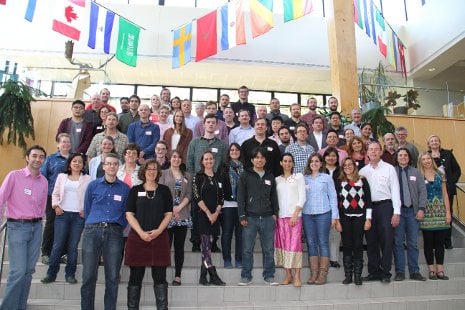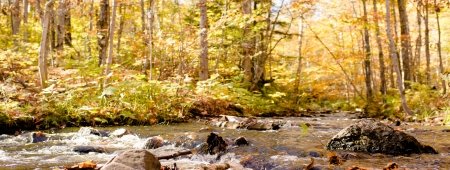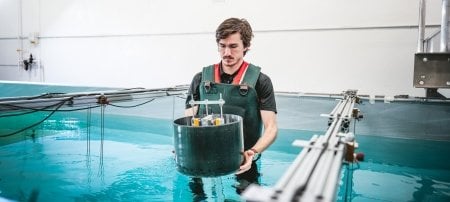Bioenergy Across the Americas

Researchers across the Americas look to forests for power, transportation fuel and heat. More than 80 of those researchers from Brazil, Argentina, Canada, Mexico, Uruguay and the US met at Michigan Technological University to discuss bioenergy.
The work is part of the Partnerships for International Research and Education (PIRE), funded by the National Science Foundation (NSF). Kathy Halvorsen, a professor of natural resource policy at Michigan Tech, helps lead the PIRE research group, which is highly interdisciplinary.
“As we move forward with the project spanning six countries, I am always thinking about how are we going to be able to answer our research questions,” Halvorsen says, adding the project spans social, natural and engineering sciences. “We have to think about how we do our research so we can compare and integrate our data across the countries and disciplines.”
Interdisciplinary Research
A project this large can be unwieldy, so Halvorsen works with subgroup and country team leaders to effectively pursue their interdisciplinary research in bioenergy. Studying bioenergy naturally builds off multiple disciplines and goes beyond just the global biofuels discussion.
The simplest form of bioenergy is using wood for heat. But bioenergy includes burning biomass for electricity as well as biofuels developed to replace or combine with conventional liquid transportation fuels. The PIRE research delves into the social, cultural, political and environmental impacts of growing bioenergy sources like aspen, jatropha, eucalyptus, oil palm and other plants — and such an in-depth query covering a variety of forests and crops requires the expertise of many.
“As an interdisciplinary scientist, I have to be comfortable with the fact that I can’t assume I’ll have a working understanding of all the nitty-gritty details,” says Robert Handler, a research assistant professor of chemical engineering and operations manager for Michigan Tech’s Sustainable Futures Institute. “You have to be able to relinquish a bit of control — but we all see the benefit in order to gain a more holistic understanding of the systems we think are important.”
Resiliency and Sustainability
While Halvorsen and Handler work to keep the PIRE research integrated, other researchers develop the project’s many nuances. This can include pollinator studies in Argentina, land use comparisons between sites in Canada and Mexico, or interviews and surveys teasing out the attitudes toward bioenergy in all six countries. To date, 732 of those surveys have been completed — a much larger qualitative sample size than what most researchers alone could achieve.
All together, this detail work seeks to answer what Jesse Abrams of the University of Oregon calls the “uber-question”: how does the research assess the sustainability of bioenergy systems. Christopher Webster, a professor of quantitative ecology at Michigan Tech, says that building resiliency is also part of that question, but it’s not easy to define.
“Resiliency is a basic component of a system’s sustainability,” Webster says, adding that systems can be human communities as well as ecosystems. “It’s whether the system can rebound and maintain its identity following disruption or stress, like floods and droughts or abrupt changes in commodity markets.”
In some ways, the PIRE research is like bioenergy yoga, looking at the best ways to build both flexibility and strength to move gracefully through changing climates and economic markets. From small plantations to spanning continents, the PIRE research seeks sustainability and resiliency using the insight of many disciplines.
Michigan Technological University is a public research university founded in 1885 in Houghton, Michigan, and is home to more than 7,000 students from 55 countries around the world. Consistently ranked among the best universities in the country for return on investment, Michigan’s flagship technological university offers more than 120 undergraduate and graduate degree programs in science and technology, engineering, computing, forestry, business and economics, health professions, humanities, mathematics, social sciences, and the arts. The rural campus is situated just miles from Lake Superior in Michigan's Upper Peninsula, offering year-round opportunities for outdoor adventure.




Comments